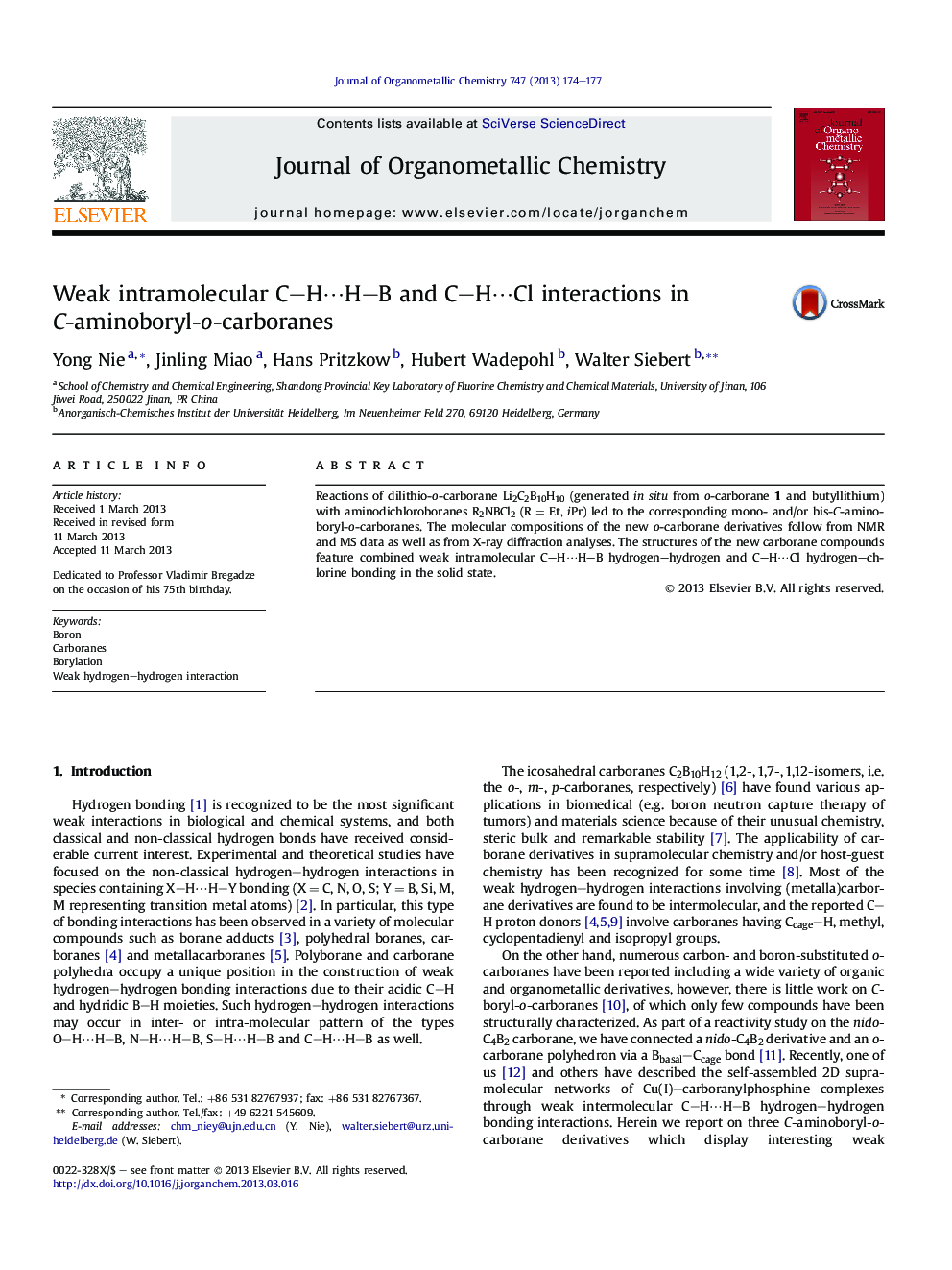| Article ID | Journal | Published Year | Pages | File Type |
|---|---|---|---|---|
| 1323685 | Journal of Organometallic Chemistry | 2013 | 4 Pages |
•Reactions of dilithio-o-carborane Li2C2B10H10 with R2NBCl2 (R = Et, iPr) were studied.•The structures of the resulting mono- and/or bis-C-aminoboryl-o-carboranes were established by X-ray diffraction.•These carboranes feature combined weak intramolecular C–H⋯H–B hydrogen–hydrogen and C–H⋯Cl hydrogen–chlorine bonding in the solid state.
Reactions of dilithio-o-carborane Li2C2B10H10 (generated in situ from o-carborane 1 and butyllithium) with aminodichloroboranes R2NBCl2 (R = Et, iPr) led to the corresponding mono- and/or bis-C-aminoboryl-o-carboranes. The molecular compositions of the new o-carborane derivatives follow from NMR and MS data as well as from X-ray diffraction analyses. The structures of the new carborane compounds feature combined weak intramolecular C–H⋯H–B hydrogen–hydrogen and C–H⋯Cl hydrogen–chlorine bonding in the solid state.
Graphical abstractThree C-borylated o-carborane derivatives, which feature a combination of weak intramolecular hydrogen–hydrogen and weak C–H⋯Cl hydrogen–chlorine interactions, have been synthesized by the reactions of dilithio-o-carborane Li2C2B10H10 with aminodichloroboranes R2NBCl2 (R = Et, iPr) and structurally characterized.Figure optionsDownload full-size imageDownload as PowerPoint slide
